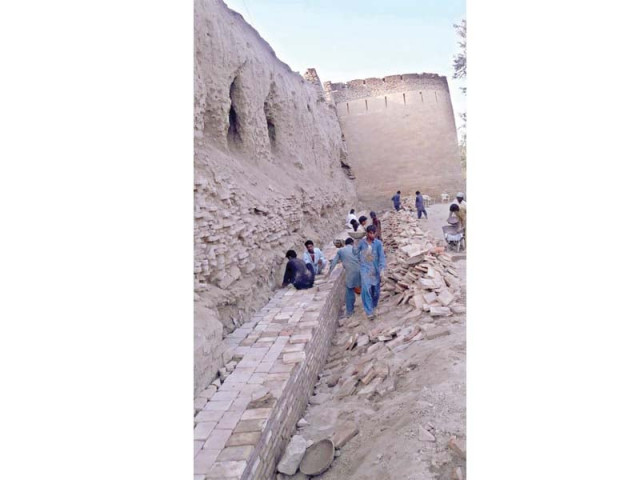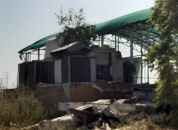Umerkot Fort to be restored by June 2017
Culture department making efforts to preserve Sindh's heritage sites

Work on Umerkot Fort is being done in accordance with international guidelines for heritage preservation. PHOTO: EXPRESS
According to officials, the front of the heritage site where Mughal emperor Akbar was born will be finished by June, 2017. "We are doing all the development work as per the guidelines of UNESCO [United Nations Educational, Scientific and Cultural Organisation]," said Roshan Ali Kanasro, director of planning and development at the culture department. He added that work was being carried out under the 'protection, preservation and promotion of protected archeological sites and monuments in Sindh' scheme.
Cultural heritage: Royal locks donated to museum
Sharing details of the project, officials said that the most dilapidated portion of the fort will be covered with tarpaulin (a heavy-duty waterproof cloth). "Steps are also being taken to stabilise the wall of the fort with a [tarp]," Kansaro said.
According to conservators, more than four million bricks will be used to protect the 45-foot-high wall, following the basic rules of heritage preservation. "We have to cover 321-feet total as well as two gates and six top bunkers," he said.

There are conflicting reports about the historical perspective of Umkerkot, which was once used for residential or military purposes by the rulers of the province. Some believe that the area is named after ruler Umer Soomro, who gained fame due to his romance with Marvi of Thar. But some historians and heritage experts say that it was actually the property of the Sodha Rajputs, who were rulers of the area. "When Humayun managed to escape India following his military defeat at the hands of Sher Shah Suri, Rana Prasad, the then Rajput ruler of the area provided him shelter in Amarkot [former name of Umerkot]. This was the place where Humayun's son Akbar was born," explained heritage expert Dr Fatah Daudpota.
Heritage conservation: Award for Shahi Hammam celebrated
According to Dr Daudpota the history of Umerkot predates the advent of Islam in the region. "It was actually the property of the Rajputs of Rajasthan until they gifted it to the Kalhoras of Sindh to develop better relations and bring peace between Sindh and Rajasthan," he said, adding that not only the Kalhoras but the Talpurs also started development work to preserve this landmark.
Ghulam Hyder Gadhi, a conservator in Umerkot, said that the mud core of the fort will be stabilised with sun dried bricks, while the outer facade of the fort will be restored using special tile bricks to be laid partly in lime mixed with fly ash and mud mortar. The top of the fort will be made watertight by laying soldier course pavement.
Published in The Express Tribune, December 21st, 2016.



















COMMENTS
Comments are moderated and generally will be posted if they are on-topic and not abusive.
For more information, please see our Comments FAQ